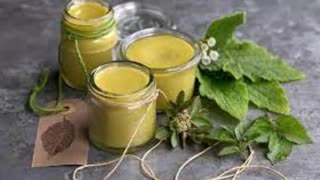Premium Only Content

Plants and Mythology
https://solitarypaganism.com/uncategorized/plants-and-mythology/
The magical plant or herb of immortality sought by Gilgamesh, the hero of ancient Mesopotamian mythology, provides one example of how myths use plants as symbols of life and of the healing power of nature. However, because some plants yield poisons and some die in winter, plants can also represent death and decay.
Various trees, shrubs, herbs, grains, flowers, and fruit appear in myths and legends as general symbols of rebirth, decay, and immortality. Some plants have acquired much more specific meaning in folklore.
Acanthus.The acanthus plant grows throughout much of the Mediterranean region. Its large leaves appear in many ancient sculptures, especially on top of columns in the Greek style called Corinthian. Legends says that after a young girl’s death, her nurse placed her possessions in a basket near her tomb. An acanthus plant grew around the basket and enclosed it. One day the sculptor Callimachus noticed this arrangement and was inspired to design the column ornament.
Bamboo.The jointed, cane like bamboo plant plays a role in Asian folklore. Because bamboo is sturdy and always green, the Chinese regard it as a symbol of long life. In the creation story of the Andaman Islanders of the Indian Ocean, the first man is born inside a large stalk of bamboo. Philippine Islanders traditionally believed that bamboo crosses in their fields would bring good crops.
Beans.Beans have been an important food source for many cultures, except for the ancient Egyptians, who thought beans were too sacred to eat. Many Native Americans—from the Iroquios of the Northeast to the Hopi of the Southwest—hold festivals in honor of the bean. Europeans traditionally baked bean cakes for a feast on the Christian holiday of Epiphany, or Twelfth Night. Some ancient lore linked beans with the dead. The Greek philosopher Pythagoras thought that the souls of the dead resided within beans, while the Romans dreaded the lemures—the evil spirits of the dead—who brought misfortune on a home by pelting it with beans at night.
immortality ability to live forever
deity god or goddess
Cereal Grains.Grain-bearing cereal grasses, “the bread of life,” are basic to the diets of most cultures. Rice is the staple grain throughout much of southern Asia. In many Asian cultures, people perform rituals to honor the rice spirit or adeityof rice, usually a female. Some peoples, such as the Lamet of northern Laos, believe in a special energy or life force shared only by human beings and rice.
Although maize, a grain native to the Americas, is now called corn, many Europeans traditionally used the word corn to refer to such grains as barley, wheat, and oats. Europeans often spoke of female corn spirits, either maidens, mothers, or grandmothers. Grain waving in the wind, for example, was said to mark the path of the Corn Mother. Such sayings may have come from ancient beliefs that grains were sacred to harvest goddesses such as Greek Demeter and Roman Ceres.
In Central America, the Maya believed that human beings were made from maize. After attempts with other materials failed, the gods succeeded in creating people by using ground maize mixed with water.
Clover. Came to represent fertility and prosperity in English folklore, and dreaming of clover foretold a happy marriage.
Coffee.Legends from various parts of the world tell how people learned of the stimulating properties of caffeine, contained in the beans of the coffee bush. An Ethiopian story says that a goatherd noticed that the beans from a particular bush made his goats unusually alert and frisky. People sampled the beans and determined that they might be useful for keeping people awake during evening religious ceremonies. Similar tales from Europe and South America also relate that people discovered the effects of caffeine in coffee by observing animals.
Ginseng.The ginseng root has long been prized in Asia for its medicinal properties. It was also thought to provide strength and sexual energy. A Korean legend says that a poor boy caring for his dying father prayed to the mountain spirit, who appeared to him in a dream and showed him where to find ginseng. A drink made from the root cured the father. Another legend tells of a man who found ginseng and tried to sell it at a high price. When his greed led to his arrest, he ate the root, which made him so strong that he overpowered his guards and escaped.
Ivy.The leaves and vine of the ivy, which remain green year round, often symbolize immortality The plant was associated with Dionysus, the Greek god of wine (Roman Bacchus), who wore a crown of ivy and carried a staff encircled with the vine.
Laurel The evergreen laurel tree or shrub occurs in many varieties, including cinnamon and sassafras. Greek mythology says that Daphne, a nymph who rejected the love of Apollo*, was turned into a laurel tree. The laurel was sacred to Apollo, whose priestesses were said to chew its leaves in order to become oracles.The Greeks also crowned some of their champions with laurel wreaths. According to English mythology, if two lovers take a laurel stick, break it in half, and keep the pieces, they will always remain faithful to each other.
Leek.The leek—a vegetable with a stalk of leaves layered like the skins of an onion—is the national emblem of Wales. According to legend, St. David, the patronsaint of Wales, ordered a troop of Welsh soldiers to put leeks in their caps to identify each other during a battle. When the Welsh side won, the soldiers thanked the saint—and the leek—for the victory.
Mandrake.The mandrake plant has properties that bring on sleep or reduce pain. Many folklore traditions link the plant with sexual behavior. In the biblical book of Genesis, for example, Jacob’s wife, Leah, obtains mandrake root to become pregnant. The Arabs called the plant devil’s apples because they considered the arousal of sexual desire to be evil.MedievalChristians associated the mandrake with devil worship, and witches were believed to make images of their victims from mandrake root. According to one European tradition, a mandrake root cries out when pulled from the ground.
Manioc.Flour made from the manioc root is a traditional staple food of the Amazon peoples of South America. A story about Mani, an old, much-loved village leader, explains the origin of manioc. Before dying, Mani promised to come back to take care of his people, and he told them to dig in the ground a year after his death. What they found was the manioc root, Mani’s body turned into food.
Mistletoe.The mistletoe plant, which grows in trees, appears in European legends as a symbol of fertility and eternal life, perhaps because it remains green all winter. Unlike most plants, mistletoe thrives without being rooted in soil. This may explain why many cultures have believed it to be heavenly or supernatural. Mistletoe has also been said to offer protection from sorcery and evil spells. The Druids believed that mistletoe had great healing properties, especially if it was gathered without the use of a knife and never allowed to touch the ground. Some Africans compare the mistletoe on a tree to the soul in the body, and they believe that
Myrtle.An evergreen shrub, myrtle is associated with birth and rebirth in European mythology. The ancient Greeks carried myrtle with them when they colonized new lands to symbolize the beginning of a new life. The Greeks also associated myrtle with Aphrodite, the goddess of love.
Parsley.The Greeks believed that the herb parsley grew from the blood of a hero named Achemorus who was killed by a serpent. At games held in his honor, they crowned the winners with parsley wreaths. Both the Greeks and the Romans regarded parsley as a symbol of death and rebirth. They often put parsley on tombs, and someone “in need of parsley” was on the verge of death.
Thistle.A Scottish legend tells how the thistle, a plant with purple blooms and prickly stems and leaves, became a national emblem. AroundA.D. 950, Norse raiders invaded Scotland. As they crept toward a Scottish camp after dark, one of them stepped on a thistle. The resulting cry of pain awoke the Scots, who drove the invaders away and saved Scotland.
Tobacco.The tobacco plant originated in the Americas, and smoking dried tobacco leaves was part of many Native Americanrituals.Native Americans of different regions developed various
*SeeNantes and Placesat the end of this volume for further information.
myths about tobacco. In the Southwest and Central America, tobacco is associated with rainfall because tobacco smoke resembles clouds that bring rain. A story from southeastern North America says that tobacco’s origin was related to sex. A young man and woman who were traveling left the path to make love. They married soon afterward. Later the man passed the place again and found a sweet-smelling plant growing there. His people decided to dry it, smoke it, and call it “Where We Came Together.” The couple’s life together was happy and peaceful, so the flower produced by their love—tobacco—was smoked at meetings intended to bring peace.
Yam.In a myth from the African country of Kenya, the creator god Ruwa made humans immortal and gave them a paradise to live in but ordered them not to eat one plant growing there—the edible root known as the yam. One day Death told the people to cook the yam for him. When Ruwa learned what the people had done, he took away their immortality.
-
 9:21
9:21
asolitarypagan.com
1 year agoMaking Herbal Salves
1.9K -
 LIVE
LIVE
Amish Zaku
2 hours agoVariety Stream
97 watching -
 23:51
23:51
Adam Does Movies
20 hours ago $1.19 earned28 Years Later - Movie Review
6.97K5 -
 27:26
27:26
Scary Mysteries
1 day agoThe BUTCHER BAKER: Alaska's DEADLIEST Predator
4.12K -
 LIVE
LIVE
Gore TV
1 hour agoBRAINS? Nah, Just Beans. ☕🧠🧟 ♂ | Coffee Break with Zombies!
76 watching -
 15:53
15:53
Forrest Galante
5 hours agoPrivate Tour of India’s Best Secret Aquarium
30.7K5 -
 LIVE
LIVE
Astral Doge Plays!
2 hours agoZelda: Breath of the Wild ~LIVE!~ Rito Times
42 watching -
 LIVE
LIVE
ABNERDAGREAT
3 hours ago🔴DOOM ON MARATHON ON RUMBLE🔴
22 watching -
 LIVE
LIVE
NEWSMAX
6 months agoNEWSMAX2 LIVE | Real News for Real People
1,935 watching -
 13:56
13:56
World2Briggs
21 hours ago $0.45 earned10 Retirement Cities That Sounded Good… Until You Got There
8.95K2